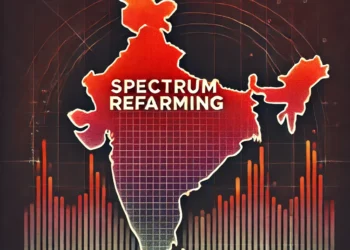The Financial Express recently reported that the central government is considering allocating the upper portion of the 6 GHz band for International Mobile Telecommunications (IMT), specifically for the deployment of 5G and future 6G technologies. The 6 GHz band spans from 5925 MHz to 7125 MHz, offering a total of 1200 MHz of spectrum. Of this, the Government of India (GoI) plans to allocate the upper segment from 6425 MHz to 7125 MHz, amounting to 700 MHz—a significant portion but still leaving 500 MHz unallocated.
To put this in perspective, the 3.5 GHz band currently allocated for IMT services in India ranges from 3300 MHz to 3670 MHz, offering 370 MHz of spectrum. The proposed 6 GHz allocation is nearly 1.9 times larger than the 3.5 GHz band, which may seem promising in addressing spectrum scarcity and easing capacity bottlenecks in the Indian mobile industry.







I know this web page gives quality based content and additional data, is there any
other website which presents these kinds of things in quality?
You’ve made some decent points there. I checked on the web
to learn more about the issue and found most individuals will go along with your views on this web site.
Hurrah, that’s what I was looking for, what a data!
present here at this web site, thanks admin of
this web page.
Thanks to my father who shared with me concerning this website, this website is really
awesome.
Wow that was odd. I just wrote an very long comment
but after I clicked submit my comment didn’t show up. Grrrr…
well I’m not writing all that over again. Regardless, just
wanted to say great blog!
Hi there, You have done a fantastic job. I’ll definitely digg
it and personally recommend to my friends.
I am confident they’ll be benefited from this site.
I know this web site presents quality depending content and
extra material, is there any other web page which gives these data in quality?
I’m not sure where you are getting your info, but great topic.
I needs to spend some time learning much more or understanding more.
Thanks for wonderful information I was looking for this info for my mission.